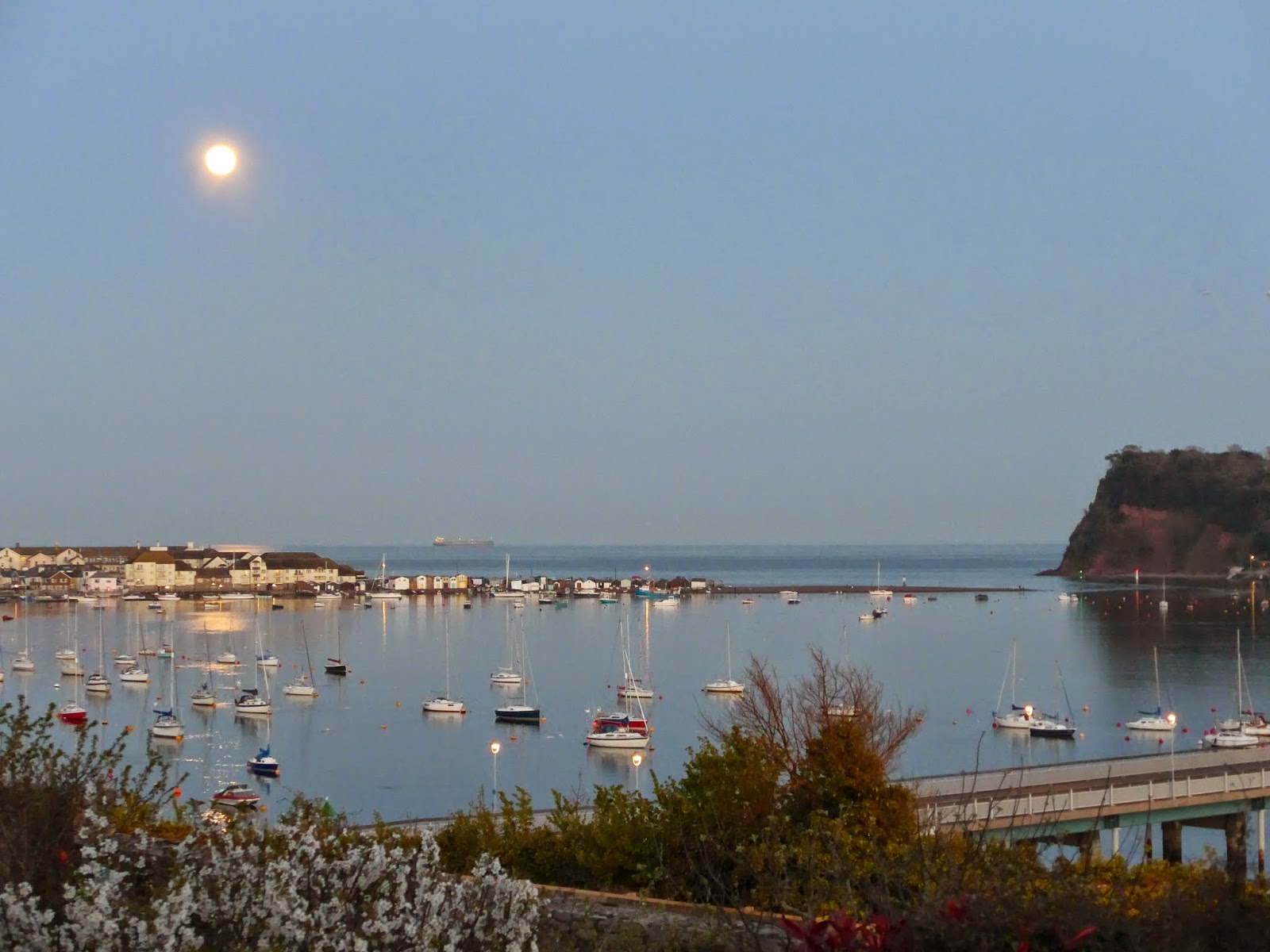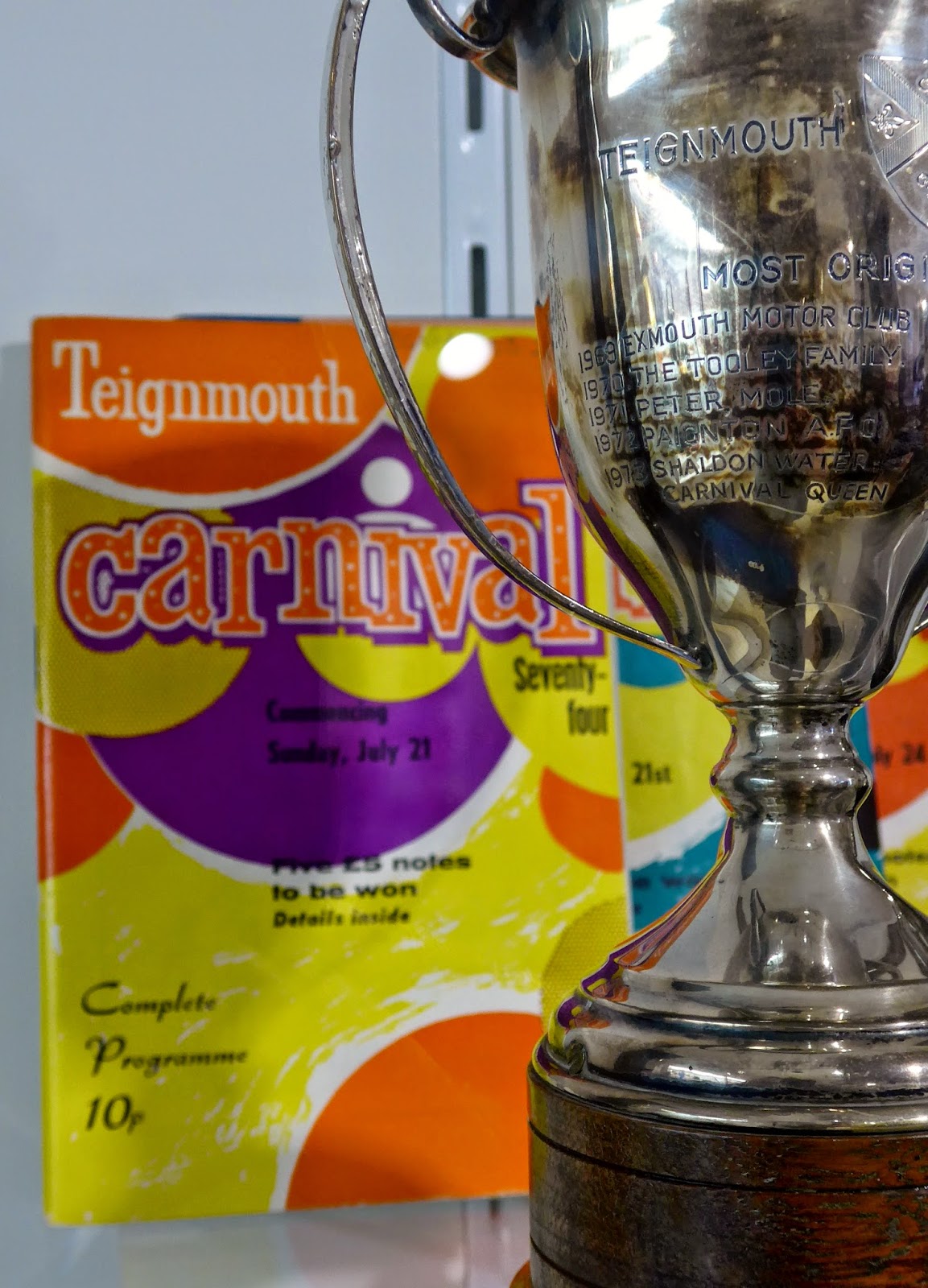There are many events on the Teignmouth time line in the Teignmouth Museum.
It's a town with connections.
Connections to rock stars...
It's a town with connections.
Connections to rock stars...
...The Beatles,
...and Muse.
They played a homecoming concert on The Den
and used an image of Teignmouth Pier for their poster.
They played a homecoming concert on The Den
and used an image of Teignmouth Pier for their poster.
Muse appear on museum and town centre walls.
Other connections are more permanent, now set in stone, but their beginnings were in timber, requiring building materials. Shaldon Bridge connecting Teignmouth to Shaldon across the River Teign estuary.
Shaldon bridge was built in 1827,
"the longest timber bridge in England".
Woe betide anyone who stole any materials during the build, with a two pound reward for shopping on someone you were bound to be caught.
You had to pay to cross Shaldon Bridge.
The pay-structure seemed a little on the complicated side,
and this is only the top half of the list.
A penny for pedestrians and tuppence for a wheelbarrow. The ever thrifty Devonians were said to have removed the wheels from their barrows and carried them across to save money.
Or 'allegedly', waited until after dark, when the toll-keeper had gone to bed and hot-footed it over the bridge without paying a penny.
The timber bridge lasted 104 years and in 1931 a stone bridge replaced the original.
In 1948 Devon County Council stepped in and bought the bridge and the tolls were abolished.
No need now to wait until after dark to save a penny or two.
Other connections are remembered with more mixed reactions.
Not all fame is wanted.
People can draw attention to themselves, and their town, for all the wrong reasons.
In 1968 Donald Crowhurst set sail to race solo around the world, in his catamaran, the Teignmouth Electron. He appeared to break race rules, disappeared and his boat was found adrift in the Atlantic. He was never seen again and his disappearance is still a mystery to this very day.
More connections,
Teignmouth's with the Second World War.
Teignmouth's with the Second World War.
Teignmouth was a town where evacuees were sent to escape the bombing. When the war started they were told to expect 2,400 refugees. Mind you Teignmouth was heavily bombed itself, due to it having a port, the coastal railway and a nearby aerodrome.
Connections with the sea.
Many people can thank Teignmouth Life Boats for saving their lives.
Remembering lives saved...
...and the volunteer crew.
There has been a lifeboat station in Teignmouth since 1851. Staffed by volunteers.
And imagine, this was one of the earliest life-jackets.
One last connection, to my granny who had one of these, so my mum tells me.
An Easiwork Health Cooker from the 1930s,
a pressure cooker to you and me.
She "picked it up at an auction in the 50s".
My mum remembers her buying horse meat stained with green ink to show that is was not fit for human consumption and cooking it for the dog. Mum and I did laugh at the thought of her tiny Dachshund eating an animal the size of a horse.
Connecting back to the Second World War, we did comment that rather than a pressure cooker, it looked more like a large hand-grenade.
Connecting back to the Second World War, we did comment that rather than a pressure cooker, it looked more like a large hand-grenade.
Back to the time line,
"Teignmouth is Devon".
Come and see for yourself
in the Teignmouth Museum
open Tuesday to Saturdays in the Teign Heritage Centre.
Details on their website here.
To read my previous post
'Wish You Were Here!'
about sea-side fun how it used to be, in Teignmouth Museum, click here.
"Teignmouth is Devon".
Come and see for yourself
in the Teignmouth Museum
open Tuesday to Saturdays in the Teign Heritage Centre.
Details on their website here.
To read my previous post
'Wish You Were Here!'
about sea-side fun how it used to be, in Teignmouth Museum, click here.






















































